It looks like you're using an Ad Blocker.
Please white-list or disable AboveTopSecret.com in your ad-blocking tool.
Thank you.
Some features of ATS will be disabled while you continue to use an ad-blocker.
8
share:
Beyond the Templars:
The “Other” Medieval Military Orders
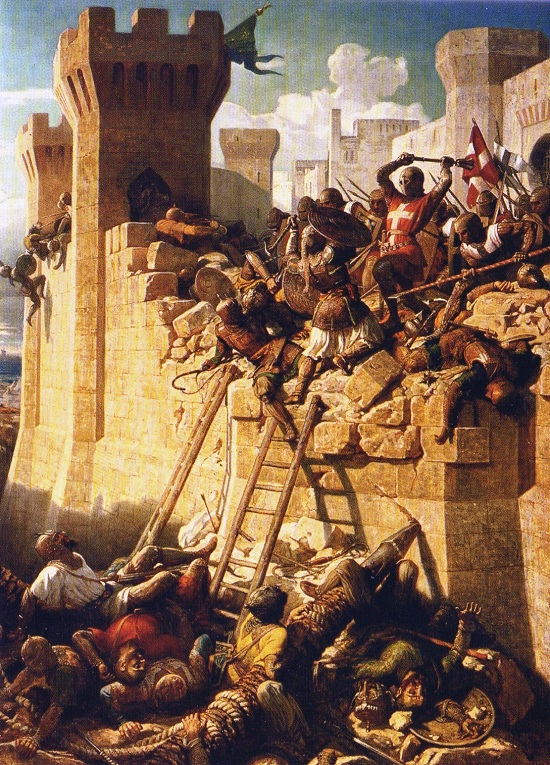
Above: The Knights Hospitaller on the walls at the Siege of Acre (1291)
The Knights Templar are a familiar topic to conspiracy theorists and secret-society observers, and have even gained a certain amount of pop culture recognition in recent years. Less well known, however, are the numerous other militarized orders that developed in the course of Western Christian history. This thread will focus on four other major orders that, like the Templars, played a role in the crusades and were active in the Middle East at around the same time (the 11th and 12th centuries). This is not an exhaustive list of Christian militarized orders, which include numerous smaller groups created at different times and places. It is, however, a good place to start.
What Is a “Military (or Militarized) Order?”
Starting in the Middle Ages, the Catholic Church began to create a series of societies of knights who were tasked with the spreading or defense of the faith, mostly (but not exclusively) in the Holy Land, at least at first. This phenomenon arose first in connection with the increased flow of Christians into the Holy Land, either as simple pilgrims on devotional journeys or as crusaders battling Islamic forces. Secretive, elite, ritualistic, and marked by intense discipline and rigor, they fused warfare with religious mission. Members of these orders can perhaps be thought of as somewhere between monks and warriors.
Later “mission creep” and the general flow of history took these societies in different directions — The Templars, the most well-known of these groups, became fantastically wealthy through their money-lending activities and special tax-exempt status, for example, and the subject of much controversy. Other militarized orders were formed later in Europe, and most became “secularized” after the end of the crusading era. The four we will look at here, plus the Templars, constitute the oldest and largest of the Western Christian military orders.
Knights Hospitaller
(Also known as the Hospitallers, the Order of Hospitallers, the Knights of St John, and the Order of St John)
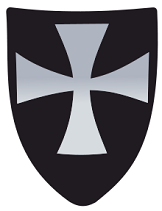
Before being officially recognized as an order, the Hospitallers were associated with an Amalfitan hospital in Jerusalem dedicated to caring for pilgrims to the Holy Land. The Hospitallers became a militarized religious order after the First Crusade. Following the Islamic conquest of the Holy Land, they moved first to Rhodes and later to Malta. Today they live on as the Sovereign Military Order of Malta (Knights of Malta), headquartered in Rome, although they are not the only contemporary order to claim descent from the Hospitallers. Under direct control of the pope, today’s Knights of Malta enjoy observer status at the United Nations.
Knights of St Lazarus
Full Name: The Military and Hospitaller Order of Saint Lazarus of Jerusalem (Latin: Ordo Militaris et Hospitalis Sancti Lazari Hierosolymitani)

Originating in a hospital founded by the Hospitallers to treat those with leprosy, this order took on Knights Templars and others who had developed the dreaded disease. In addition to taking on knights with leprosy and training them as fighters, it provided medical care to those with the disease, founded “Lazar houses” in Europe for lepers, and became a powerful military force in general for the defense of the Christian faith. The order was de-militarized in 1291 but it still exists today (although without an exlusive focus on leprosy).
Knights of the Holy Sepulchre
Full Name: Equestrian Order of the Holy Sepulchre of Jerusalem (OESSH) (Latin: Ordo Equestris Sancti Sepulcri Hierosolymitani)
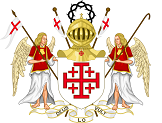
This group was and remains under the direct control of the Pope. It is said to have been founded by Duke Godfrey of Bouillon, one of the leaders of the First Crusade, and tasked with protecting the Holy Sepulcher, where Christ’s body is said to have lain. For a time they had their headquarters on top of Mount Sion in Jerusalem. The order was suppressed in 1489 by Pope Innocent VIII but revived again only a few years later.
Knights of the Hospital of St Mary of Jerusalem (AKA the Teutonic Knights)
Full Name: The Order of Brothers of the German House of Saint Mary in Jerusalem (Latin:Ordo domus Sanctæ Mariæ Theutonicorum Hierosolymitanorum; German: Orden der Brüder vom Deutschen Haus St. Mariens in Jerusalem)
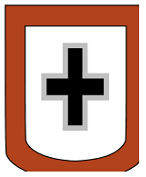
The Teutonic Knights were originally a small force, formed with German members in particular to protect pilgrims and establish hospitals. As time went on they augmented their forces with volunteers and mercenaries. Seperate Protestant and a Catholic branches came into being after the reformation. The Teutonic Knights moved to Transylvania in 1211 and later launched the so-called Prussian Crusade in northeastern Europe. They became very powerful, even establishing their own independent nation, the Monastic State of the Teutonic Knights. Their secular power was smashed in 1410 by Polish-Lithuanian forces.
The “Other” Medieval Military Orders

Above: The Knights Hospitaller on the walls at the Siege of Acre (1291)
The Knights Templar are a familiar topic to conspiracy theorists and secret-society observers, and have even gained a certain amount of pop culture recognition in recent years. Less well known, however, are the numerous other militarized orders that developed in the course of Western Christian history. This thread will focus on four other major orders that, like the Templars, played a role in the crusades and were active in the Middle East at around the same time (the 11th and 12th centuries). This is not an exhaustive list of Christian militarized orders, which include numerous smaller groups created at different times and places. It is, however, a good place to start.
What Is a “Military (or Militarized) Order?”
Starting in the Middle Ages, the Catholic Church began to create a series of societies of knights who were tasked with the spreading or defense of the faith, mostly (but not exclusively) in the Holy Land, at least at first. This phenomenon arose first in connection with the increased flow of Christians into the Holy Land, either as simple pilgrims on devotional journeys or as crusaders battling Islamic forces. Secretive, elite, ritualistic, and marked by intense discipline and rigor, they fused warfare with religious mission. Members of these orders can perhaps be thought of as somewhere between monks and warriors.
Later “mission creep” and the general flow of history took these societies in different directions — The Templars, the most well-known of these groups, became fantastically wealthy through their money-lending activities and special tax-exempt status, for example, and the subject of much controversy. Other militarized orders were formed later in Europe, and most became “secularized” after the end of the crusading era. The four we will look at here, plus the Templars, constitute the oldest and largest of the Western Christian military orders.
Knights Hospitaller
(Also known as the Hospitallers, the Order of Hospitallers, the Knights of St John, and the Order of St John)

Before being officially recognized as an order, the Hospitallers were associated with an Amalfitan hospital in Jerusalem dedicated to caring for pilgrims to the Holy Land. The Hospitallers became a militarized religious order after the First Crusade. Following the Islamic conquest of the Holy Land, they moved first to Rhodes and later to Malta. Today they live on as the Sovereign Military Order of Malta (Knights of Malta), headquartered in Rome, although they are not the only contemporary order to claim descent from the Hospitallers. Under direct control of the pope, today’s Knights of Malta enjoy observer status at the United Nations.
Knights of St Lazarus
Full Name: The Military and Hospitaller Order of Saint Lazarus of Jerusalem (Latin: Ordo Militaris et Hospitalis Sancti Lazari Hierosolymitani)

Originating in a hospital founded by the Hospitallers to treat those with leprosy, this order took on Knights Templars and others who had developed the dreaded disease. In addition to taking on knights with leprosy and training them as fighters, it provided medical care to those with the disease, founded “Lazar houses” in Europe for lepers, and became a powerful military force in general for the defense of the Christian faith. The order was de-militarized in 1291 but it still exists today (although without an exlusive focus on leprosy).
Knights of the Holy Sepulchre
Full Name: Equestrian Order of the Holy Sepulchre of Jerusalem (OESSH) (Latin: Ordo Equestris Sancti Sepulcri Hierosolymitani)

This group was and remains under the direct control of the Pope. It is said to have been founded by Duke Godfrey of Bouillon, one of the leaders of the First Crusade, and tasked with protecting the Holy Sepulcher, where Christ’s body is said to have lain. For a time they had their headquarters on top of Mount Sion in Jerusalem. The order was suppressed in 1489 by Pope Innocent VIII but revived again only a few years later.
Knights of the Hospital of St Mary of Jerusalem (AKA the Teutonic Knights)
Full Name: The Order of Brothers of the German House of Saint Mary in Jerusalem (Latin:Ordo domus Sanctæ Mariæ Theutonicorum Hierosolymitanorum; German: Orden der Brüder vom Deutschen Haus St. Mariens in Jerusalem)

The Teutonic Knights were originally a small force, formed with German members in particular to protect pilgrims and establish hospitals. As time went on they augmented their forces with volunteers and mercenaries. Seperate Protestant and a Catholic branches came into being after the reformation. The Teutonic Knights moved to Transylvania in 1211 and later launched the so-called Prussian Crusade in northeastern Europe. They became very powerful, even establishing their own independent nation, the Monastic State of the Teutonic Knights. Their secular power was smashed in 1410 by Polish-Lithuanian forces.
edit on 8/7/2012 by silent thunder because: (no reason given)
reply to post by silent thunder
Good post! I visited the Castle of the Grand Master of the Knights of Saint John in Rhodes last year. It was fantastic! Later I will try to dig
up the photos of the fortifications and the regalia to share on your thread. Some people don't know that most of the Knights and property of the The
Order of the Poor Knights of Christ and of the Temple of Solomon (The Knights Templar) were absorbed by these Orders.
edit on 7-8-2012 by no1smootha because: (no reason given)
Thanks st for opening my eyes a little more with this taster of a post.
I had heard of a couple of these societies, but only in name, and have never looked into them. Now I shall.
I had heard of a couple of these societies, but only in name, and have never looked into them. Now I shall.
On the dissolution of the Knights Templar, the Knights Hospitaller often took over the land.
One area that has not really been looked into is the connection between these orders and the Monasteries. I can only cite York here and a connection between St Mary's Abbey / Fountains Abbey and The Templar knights (via the mill at St Georges field).
Also the Templars had half their English land held in Yorkshire while the Monasteries, Priories and Nunneries were numerous here as well.
One area that has not really been looked into is the connection between these orders and the Monasteries. I can only cite York here and a connection between St Mary's Abbey / Fountains Abbey and The Templar knights (via the mill at St Georges field).
Also the Templars had half their English land held in Yorkshire while the Monasteries, Priories and Nunneries were numerous here as well.
reply to post by silent thunder
You want a good radio documentary on the other orders, check out one from the CBC called The Sword Brothers. It is a three part series and it is pretty fasc9nating. Like the member above me mentioned, the Hospitallers took over much of the Templar land after they were disbanded.
Check that doc out sometime, if you like this stuff you should like it.
You want a good radio documentary on the other orders, check out one from the CBC called The Sword Brothers. It is a three part series and it is pretty fasc9nating. Like the member above me mentioned, the Hospitallers took over much of the Templar land after they were disbanded.
Check that doc out sometime, if you like this stuff you should like it.
edit on 7-8-2012 by GAOTU789 because: (no reason given)
Interesting indeed.
I had never heard of these. The St. Lazarus order is particularly interesting. Imagine facing down a batallion of warrior-lepers! I think I might have nigtmares tonite. An early example of biological warfare?
Ever see the movie "The Kingdom of Heaven"? The king was a leper but don't know if he was of this order. I assume the disease must have been a real problem at the time if there were enough of them to make a successful fighting force. Actually if I had this disease in those days I can imagine signing on for this kind of gig, to die with honor rather than rot away.
I had never heard of these. The St. Lazarus order is particularly interesting. Imagine facing down a batallion of warrior-lepers! I think I might have nigtmares tonite. An early example of biological warfare?
Ever see the movie "The Kingdom of Heaven"? The king was a leper but don't know if he was of this order. I assume the disease must have been a real problem at the time if there were enough of them to make a successful fighting force. Actually if I had this disease in those days I can imagine signing on for this kind of gig, to die with honor rather than rot away.
edit on 8/7/2012 by FailedProphet because: (no reason given)
really cool post!
its nice to read some actual 'facts' on ats!!!
albeit brief,it is historically correct.
i have read much about the templars and the other knightly orders,and it really interests me!
"friday the 13th,unlucky for some!"
r.i.p. mr. moley!
its nice to read some actual 'facts' on ats!!!
albeit brief,it is historically correct.
i have read much about the templars and the other knightly orders,and it really interests me!
"friday the 13th,unlucky for some!"
r.i.p. mr. moley!
Beyond Mandraki Harbour where the famous Colossos of Rhodes, a statue of the Greek Titan Helios considered one of the Seven Wonders of the Ancient
World once stood stands the fortified Old City of Rhodes and the Palace of the Grandmaster of Order of the Knights of Saint John of Jerusalem.
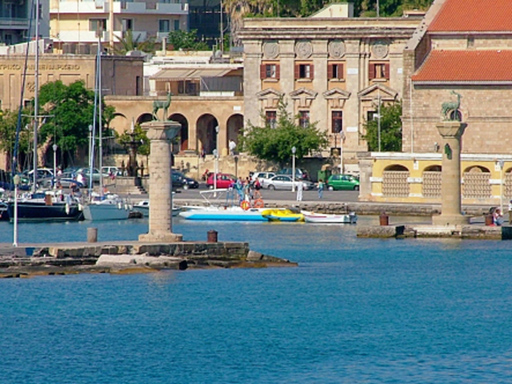 Mandraki Harbour near where the Colossos stood
Mandraki Harbour near where the Colossos stood An artist's rendering of the ancient Colossos
An artist's rendering of the ancient Colossos
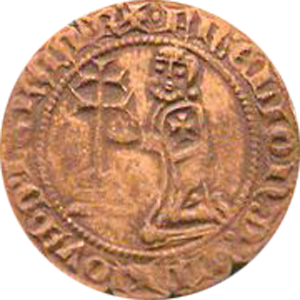
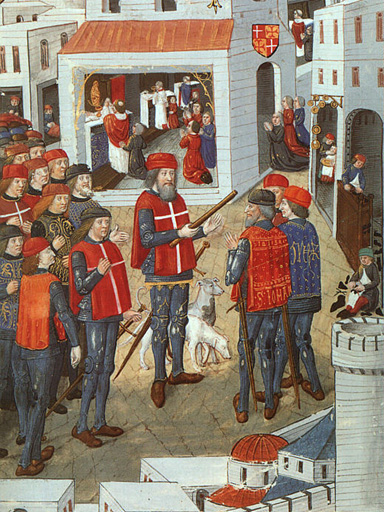 The Knights Hospitaller preparing for siege
The Knights Hospitaller preparing for siege
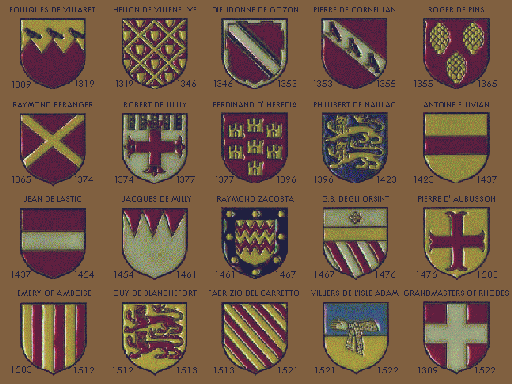 The Coat of Arms for the Grandmasters of the Knights of Rhodes
The Coat of Arms for the Grandmasters of the Knights of Rhodes
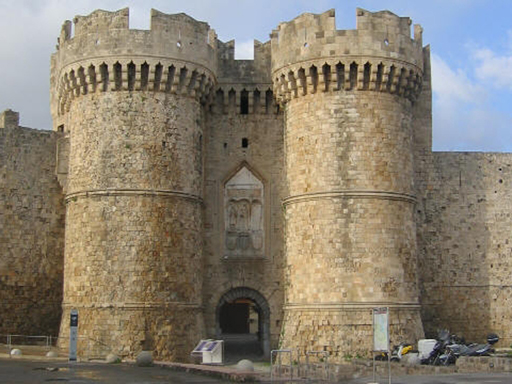 The Sea Gate accessable from the Harbour
The Sea Gate accessable from the Harbour
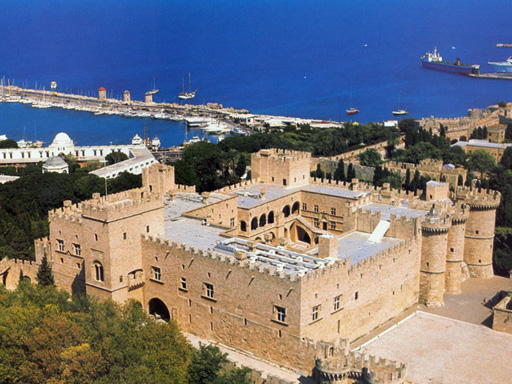 The Palace of the Grandmaster
The Palace of the Grandmaster
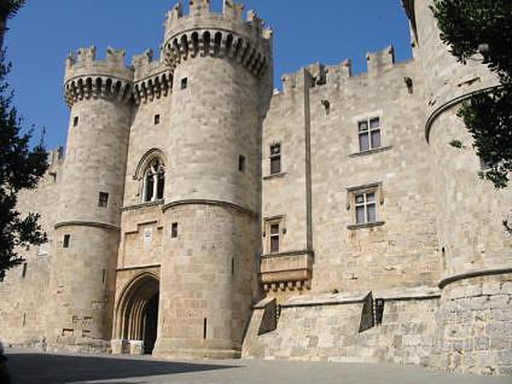 One of the gates to the Palace
One of the gates to the Palace
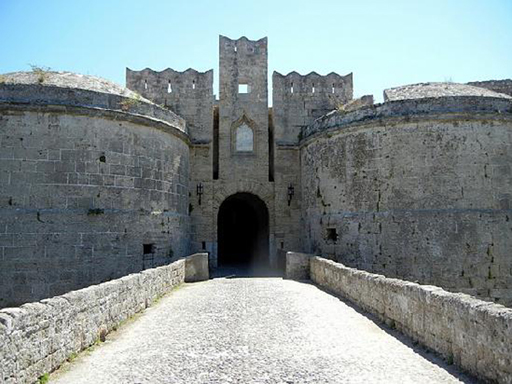 The entrance to the Palace from the land
The entrance to the Palace from the land
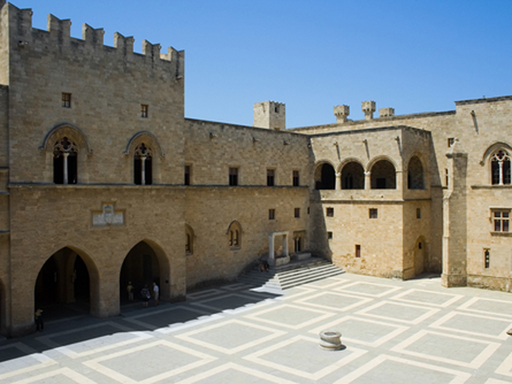 The Courtyard
The Courtyard
The interior of the Palace of the Grandmaster is now a museum to display artifacts from the middle ages and also modern displays.



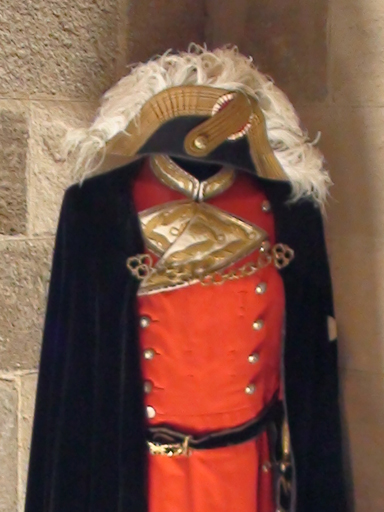
Ceremonial costumes of the Knights
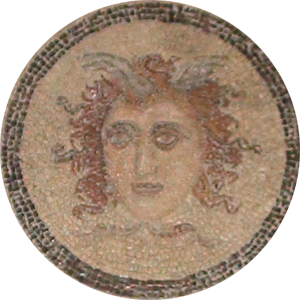
Helios on the mosaic floor
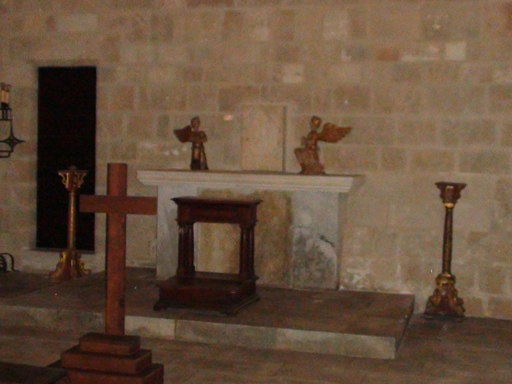
The Chapel
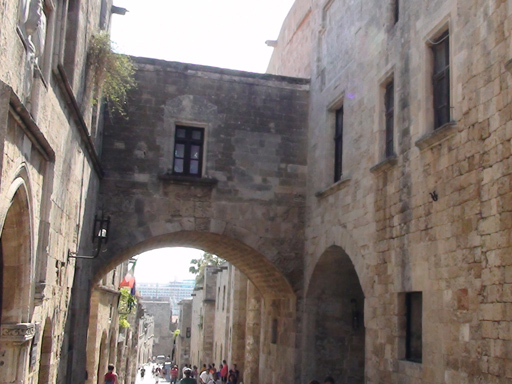
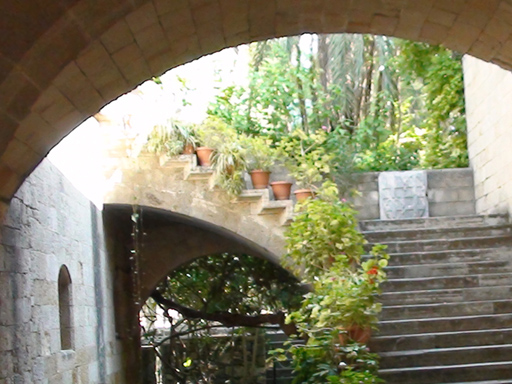
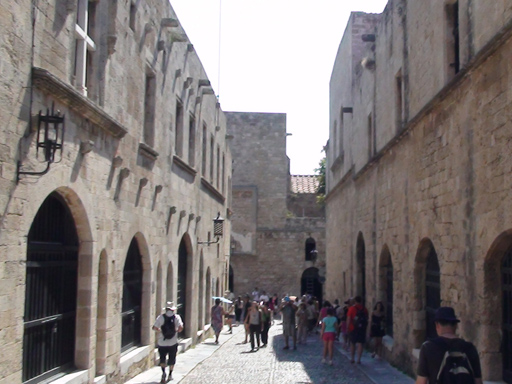

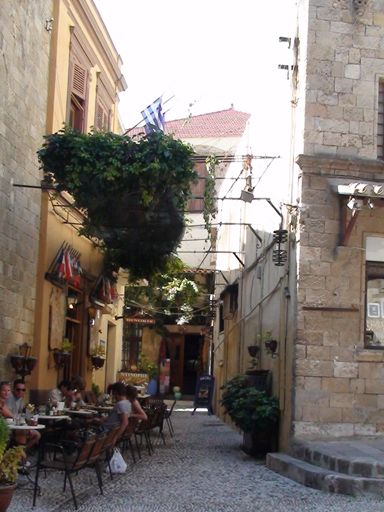


The Knights of Saint John at Jerusalem
The Knights Hospitaller, also known as the Hospitallers or Order of Hospitallers, and the Knights of St John or Order of St John, were among the most famous of the Western Christian military orders during the Middle Ages.
The Hospitallers arose as a group of individuals associated with an Amalfitan hospital in the Muristan district of Jerusalem, which was dedicated to St John the Baptist and was founded around 1023 by Blessed Gerard to provide care for poor, sick or injured pilgrims to the Holy Land. Note that other sources claim the Amalfitan order and Amalfitan hospital were different from the order of Gerard Thom and their hospital

The monastic hospitaller order was founded following the First Crusade by the Blessed Gerard, whose role as founder was confirmed by a Papal bull of Pope Paschal II in 1113.[2] Gerard acquired territory and revenues for his order throughout the Kingdom of Jerusalem and beyond. His successor, Raymond du Puy de Provence, established the first significant Hospitaller infirmary near the Church of the Holy Sepulchre in Jerusalem. Initially the group cared for pilgrims in Jerusalem, but the order soon extended to providing pilgrims with an armed escort, which soon grew into a substantial force.
The Knights of Cyprus and Rhodes
The rising power of Islam eventually expelled the Knights from Jerusalem. After the fall of the Kingdom of Jerusalem in 1291 (Jerusalem itself fell in 1187), the Knights were confined to the County of Tripoli and, when Acre was captured in 1291, the order sought refuge in the Kingdom of Cyprus. Finding themselves becoming enmeshed in Cypriot politics, their Grand Master, Guillaume de Villaret, created a plan of acquiring their own temporal domain, selecting Rhodes to be their new home, part of the Byzantine empire. His successor, Fulkes de Villaret, executed the plan, and on 15 August 1309, after over two years of campaigning, the island of Rhodes surrendered to the knights. They also gained control of a number of neighboring islands and the Anatolian port of Bodrum and Kastelorizo.
Pope Clement V dissolved the Hospitallers' rival order, the Knights Templar, in 1312 with a series of papal bulls, including the Ad providam bull, which turned over much of their property to the Hospitallers. The holdings were organised into eight "tongues" (one each in Crown of Aragon, Auvergne, Castile, England, France, Germany, Italy, and Provence). Each was administered by a Prior or, if there was more than one priory in the tongue, by a Grand Prior. At Rhodes and later Malta, the resident knights of each tongue were headed by a Bailli. The English Grand Prior at the time was Philip De Thame, who acquired the estates allocated to the English tongue from 1330 to 1358.


On Rhodes the Hospitallers, by then also referred to as the Knights of Rhodes,[6] were forced to become a more militarised force, fighting especially with the Barbary pirates. They withstood two invasions in the 15th century, one by the Sultan of Egypt in 1444 and another by the Ottoman Sultan Mehmed II in 1480 who, after capturing Constantinople and defeating the Byzantine Empire in 1453, made the Knights a priority target.





The interior of the Palace of the Grandmaster is now a museum to display artifacts from the middle ages and also modern displays.




Ceremonial costumes of the Knights

Helios on the mosaic floor

The Chapel
The Old City of Rhodes
The Old City is surrounded by heavily fortified walls, each Priory is resides in apartments down a long avenue within the sector marked by their Coat of Arms.




edit on 8-8-2012 by no1smootha because: (no reason given)
reply to post by no1smootha
Beautiful pictures! I missed the chance to go to Rhodes and the Mediterranean with the Grand Encampment this summer.
Beautiful pictures! I missed the chance to go to Rhodes and the Mediterranean with the Grand Encampment this summer.
reply to post by KSigMason
Thanks! It was one of my favorite Greek Islands of the places my wife and I visited last year Mykonos, Santorini, Patmos, Crete, and Ephesus.
The Palace had these knightly displays and the modern art displayed were reproductions of famous dresses from history. Needless to say, the wife and I
were both pleased with these and the sandy beacin the harbor.
If you have the opportunity to go again, I highly recommend it
If you have the opportunity to go again, I highly recommend it
reply to post by no1smootha
Fantastic images and info; thanks so much.
I was struck by the architecture, which seems more Northern European than Greek in style, but having never been to Greece, what do I really know. Perhaps it is a reflection of the more "international" character of these orders.
Thanks again for the contribution to this thread...
Fantastic images and info; thanks so much.
I was struck by the architecture, which seems more Northern European than Greek in style, but having never been to Greece, what do I really know. Perhaps it is a reflection of the more "international" character of these orders.
Thanks again for the contribution to this thread...
reply to post by no1smootha
It's on my places to go, but I'll have to wait til my finances reflect my traveling wants.
It's on my places to go, but I'll have to wait til my finances reflect my traveling wants.
Interestingly, the Chevalier Andrew Michael Ramsay, who gave an oration in Paris in which he expounded a Crusader link to masonic teachings connected
the Knights of Saint John of Jerusalem to our Fraternity not the Knights Templar.
Ramsay's Oration
Ramsay's Oration
At the time of the Crusades in Palestine many princes, lords, and citizens associated themselves, and vowed to restore the Temple of the Christians in the Holy Land, and to employ themselves in bringing back their architecture to its first institution. They agreed upon several ancient signs and symbolic words drawn from the well of religion in order to recognise themselves amongst the heathen and Saracens. These signs and words were only communicated to those who promised solemnly, and even sometimes at the foot of the altar, never to reveal them. This sacred promise was therefore not an execrable oath, as it has been called, but a respectable bond to unite Christians of all nationalities in one confraternity. Some time afterwards our Order formed an intimate union with the Knights of St John of Jerusalem. From that time our Lodges took the name of Lodges of St John. This union was made after the example set by the Israelites when they erected the second Temple, who whilst they handled the trowel and mortar with one hand, in the other held the sword and buckler. Our Order therefore must not be considered a revival of the Bacchanals, but as an order founded in remote antiquity, and renewed in the Holy Land by our ancestors in order to recall the memory of the most sublime truths amidst the pleasures of society.
new topics
-
Is the origin for the Eye of Horus the pineal gland?
General Conspiracies: 21 minutes ago -
Man sets himself on fire outside Donald Trump trial
Mainstream News: 32 minutes ago -
Biden says little kids flip him the bird all the time.
2024 Elections: 38 minutes ago -
The Democrats Take Control the House - Look what happened while you were sleeping
US Political Madness: 1 hours ago -
Sheetz facing racial discrimination lawsuit for considering criminal history in hiring
Social Issues and Civil Unrest: 1 hours ago -
In an Historic First, In N Out Burger Permanently Closes a Location
Mainstream News: 3 hours ago -
MH370 Again....
Disaster Conspiracies: 3 hours ago -
Are you ready for the return of Jesus Christ? Have you been cleansed by His blood?
Religion, Faith, And Theology: 6 hours ago -
Chronological time line of open source information
History: 7 hours ago -
A man of the people
Diseases and Pandemics: 8 hours ago
top topics
-
Israeli Missile Strikes in Iran, Explosions in Syria + Iraq
World War Three: 17 hours ago, 18 flags -
In an Historic First, In N Out Burger Permanently Closes a Location
Mainstream News: 3 hours ago, 14 flags -
Thousands Of Young Ukrainian Men Trying To Flee The Country To Avoid Conscription And The War
Other Current Events: 13 hours ago, 7 flags -
The Democrats Take Control the House - Look what happened while you were sleeping
US Political Madness: 1 hours ago, 7 flags -
Iran launches Retalliation Strike 4.18.24
World War Three: 16 hours ago, 6 flags -
12 jurors selected in Trump criminal trial
US Political Madness: 16 hours ago, 4 flags -
4 plans of US elites to defeat Russia
New World Order: 10 hours ago, 4 flags -
A man of the people
Diseases and Pandemics: 8 hours ago, 4 flags -
Sheetz facing racial discrimination lawsuit for considering criminal history in hiring
Social Issues and Civil Unrest: 1 hours ago, 2 flags -
Biden says little kids flip him the bird all the time.
2024 Elections: 38 minutes ago, 2 flags
active topics
-
Israeli Missile Strikes in Iran, Explosions in Syria + Iraq
World War Three • 98 • : CarlLaFong -
President BIDEN Warned IRAN Not to Attack ISRAEL - Iran Responded with a Military Attack on Israel.
World War Three • 45 • : marg6043 -
Man sets himself on fire outside Donald Trump trial
Mainstream News • 4 • : andy06shake -
Thousands Of Young Ukrainian Men Trying To Flee The Country To Avoid Conscription And The War
Other Current Events • 24 • : DerBeobachter2 -
12 jurors selected in Trump criminal trial
US Political Madness • 68 • : Annee -
"We're All Hamas" Heard at Columbia University Protests
Social Issues and Civil Unrest • 131 • : marg6043 -
Biden says little kids flip him the bird all the time.
2024 Elections • 3 • : SideEyeEverything1 -
So I saw about 30 UFOs in formation last night.
Aliens and UFOs • 35 • : charlyv -
The Democrats Take Control the House - Look what happened while you were sleeping
US Political Madness • 13 • : WiiDemBoyz -
Sheetz facing racial discrimination lawsuit for considering criminal history in hiring
Social Issues and Civil Unrest • 5 • : Shoshanna
8
